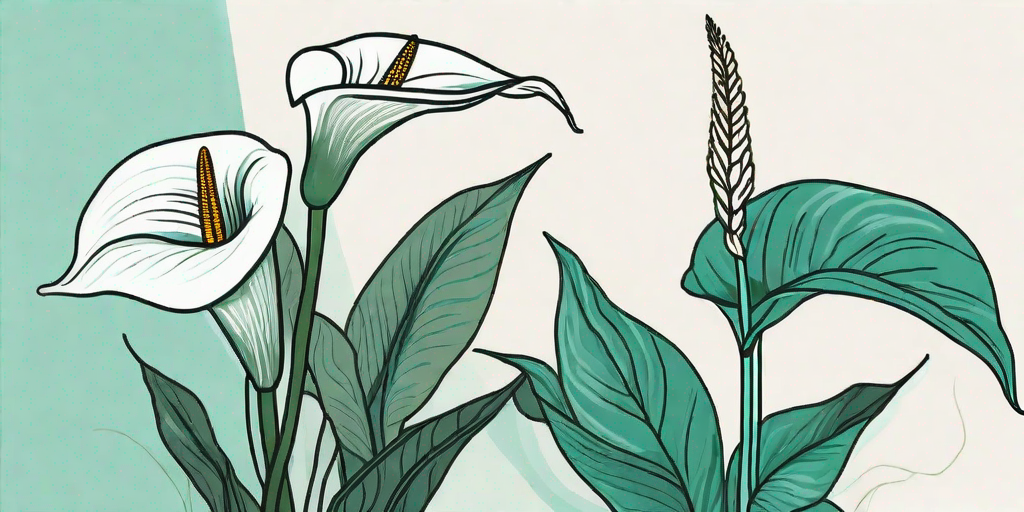
There's nothing more disheartening than seeing your once vibrant Peace Lily looking as if it's auditioning for a role in a zombie plant movie. But fear not, dear green-thumbed readers, for we are here to help you turn your Peace Lily's performance around. No longer will it play the part of the walking dead, but rather, it will take center stage as the thriving, show-stopping flora it was always meant to be.
Understanding Your Peace Lily
Before we dive into the nitty-gritty of Peace Lily care, it's crucial to understand this plant's unique personality. Yes, you read that right. Plants have personalities too, and the Peace Lily is no exception. It's a bit of a drama queen, often drooping dramatically when it needs water, only to perk up again once it's had its drink. But don't let its theatrics fool you; this plant is tougher than it appears.
Native to the tropical rainforests of America, the Peace Lily (Spathiphyllum) is an evergreen perennial that's known for its glossy green leaves and white, sail-like flowers. It's a popular houseplant not only for its beauty but also for its ability to purify the air. However, despite its tropical origins, it doesn't require a rainforest-like environment to thrive. In fact, it's quite adaptable and can do well in most indoor settings, provided it gets the right care.
How to Keep Your Peace Lily Thriving
Watering
As we've already mentioned, the Peace Lily is quite the drama queen when it comes to watering. It will droop noticeably when it's thirsty, giving you a clear sign that it's time to water. However, don't let its dramatics lead you to overwatering. This plant prefers to dry out a bit between waterings, so it's best to wait until it starts to droop before you give it a drink.
When watering, make sure to use lukewarm water. Cold water can shock the plant, causing the leaves to turn brown. Also, ensure that the pot has good drainage to prevent water from sitting at the bottom, which can lead to root rot.
Lighting
Contrary to popular belief, the Peace Lily is not a fan of direct sunlight. It prefers bright, indirect light. So, place it near a window with filtered light, or in a well-lit room. However, it's also quite tolerant of low light conditions, although it may not bloom as much.
One thing to note is that if the leaves start to yellow, it could be a sign of too much light. On the other hand, if the plant becomes leggy and the leaves turn dark green, it might not be getting enough light.
Feeding
Like any other living thing, your Peace Lily needs food to grow. A balanced, water-soluble houseplant fertilizer should do the trick. Feed your plant every 6-8 weeks during the growing season (spring and summer), and less frequently during the dormant season (fall and winter).
Remember, when it comes to feeding, less is more. Over-fertilizing can lead to salt buildup in the soil, which can cause the leaf tips to burn.
Common Peace Lily Problems and Solutions
Brown Leaf Tips
Brown leaf tips are often a sign of underwatering, over-fertilizing, or exposure to cold drafts. To remedy this, adjust your watering schedule, cut back on fertilizing, and move your plant away from cold windows or air conditioning vents.
Yellow Leaves
Yellow leaves can be a sign of overwatering or too much light. Check the moisture level of the soil before watering, and move your plant to a location with less direct light.
No Flowers
If your Peace Lily isn't blooming, it might not be getting enough light. Move it to a brighter location, but avoid direct sunlight. Also, make sure you're feeding it regularly during the growing season.
Frequently Asked Questions
- Why are the leaves of my Peace Lily drooping?
This is usually a sign that your Peace Lily needs water. Wait until the top inch of soil is dry before watering. - Can Peace Lilies grow in low light?
Yes, Peace Lilies can tolerate low light conditions, but they may not bloom as much. - Are Peace Lilies toxic to pets?
Yes, Peace Lilies are toxic to cats and dogs. Keep them out of reach of your furry friends.
So, there you have it, folks. With these tips, you can say goodbye to sickly leaves and hello to a thriving Peace Lily. Remember, plant care is not a one-size-fits-all approach. It's about understanding your plant's unique needs and adjusting your care routine accordingly. Now, go forth and make your Peace Lily the star of your indoor plant collection!















